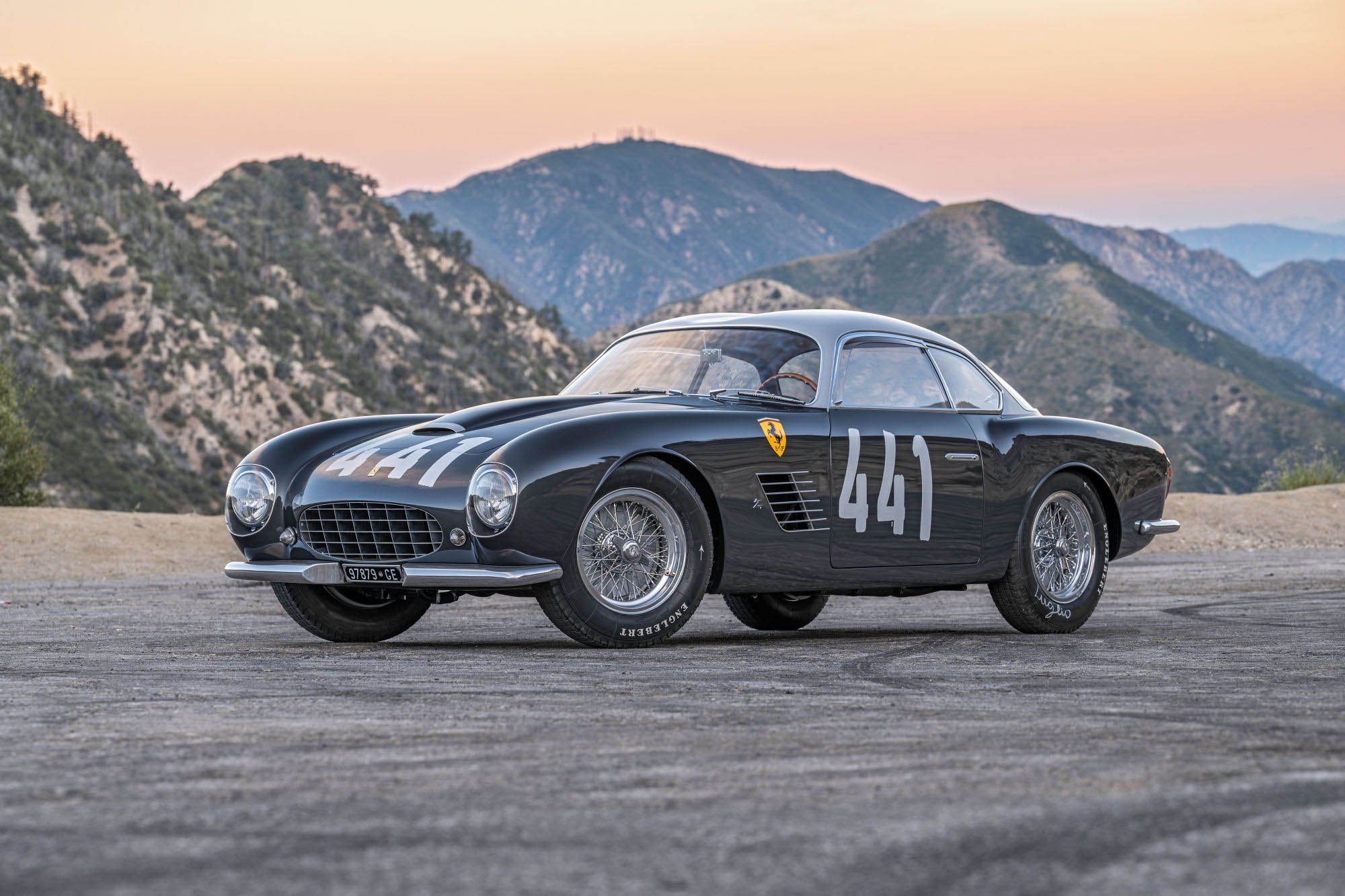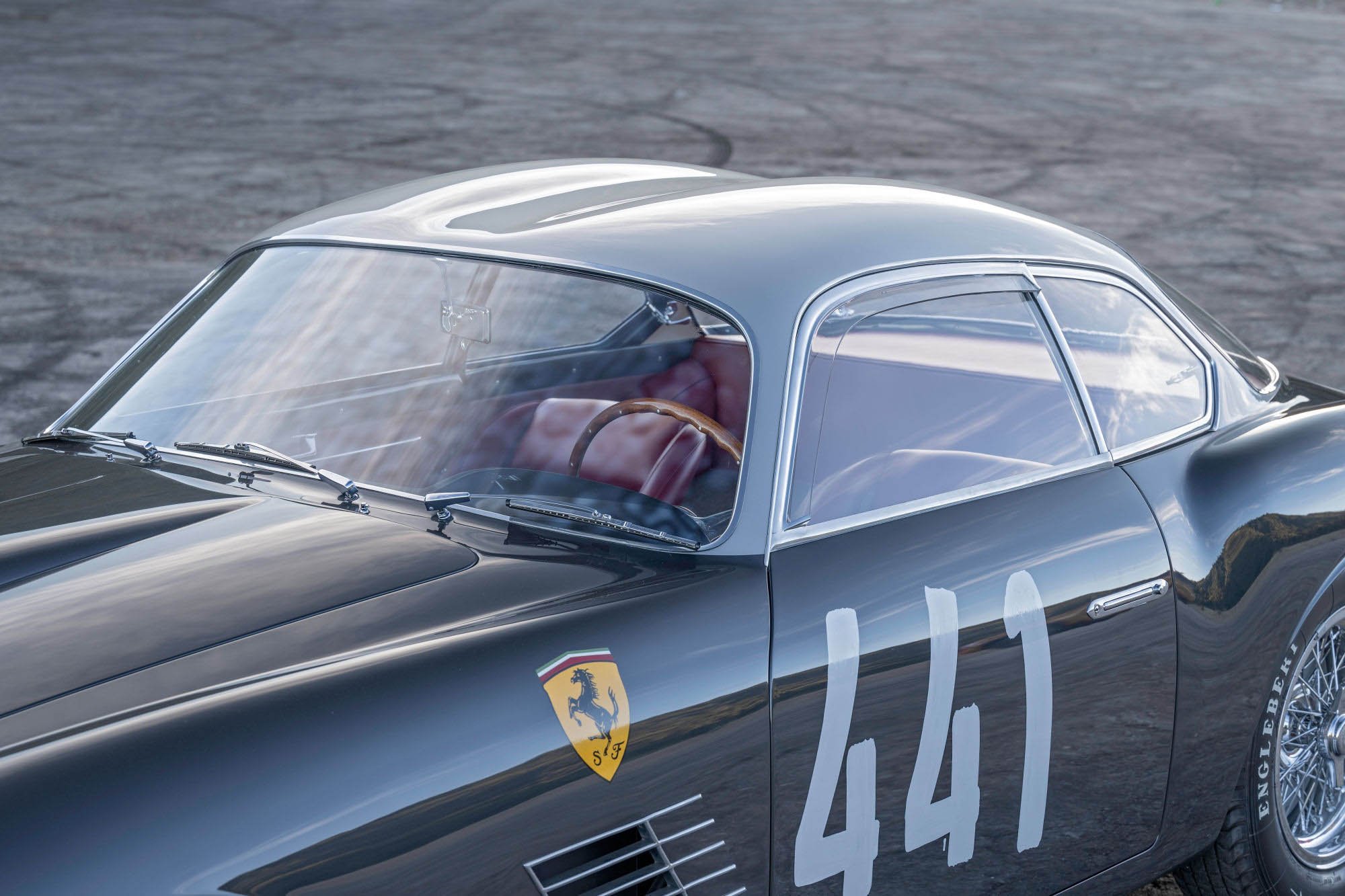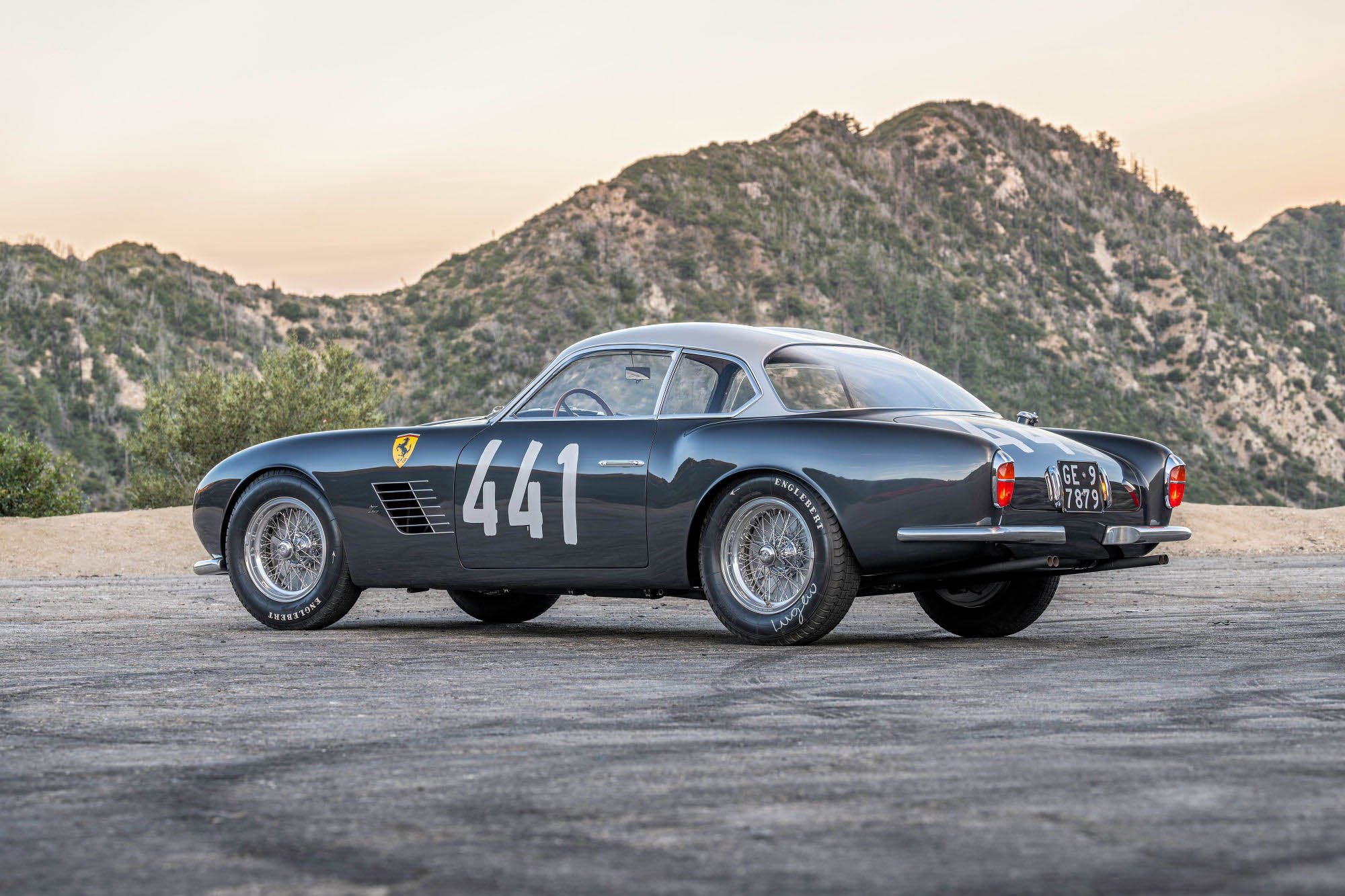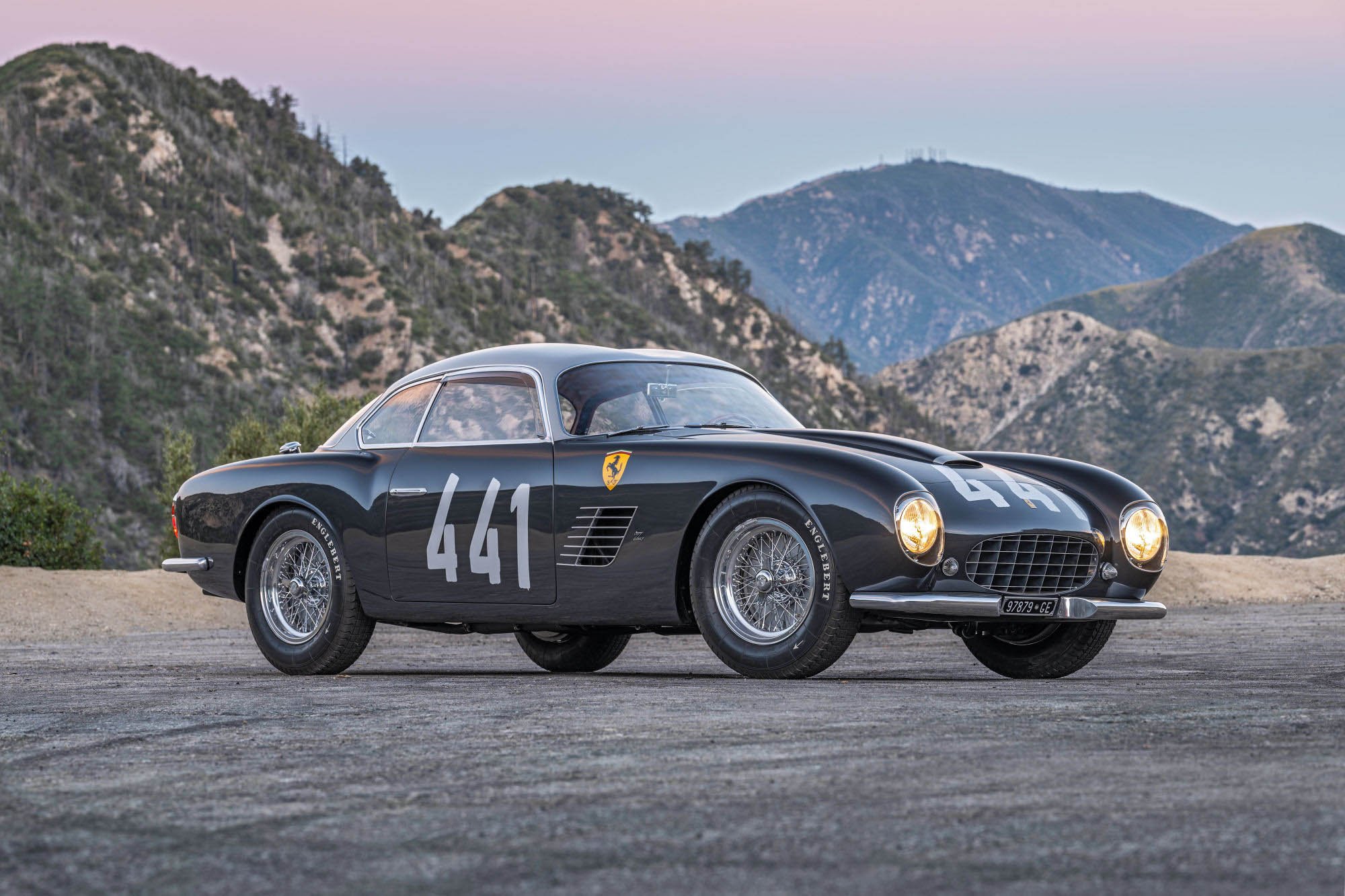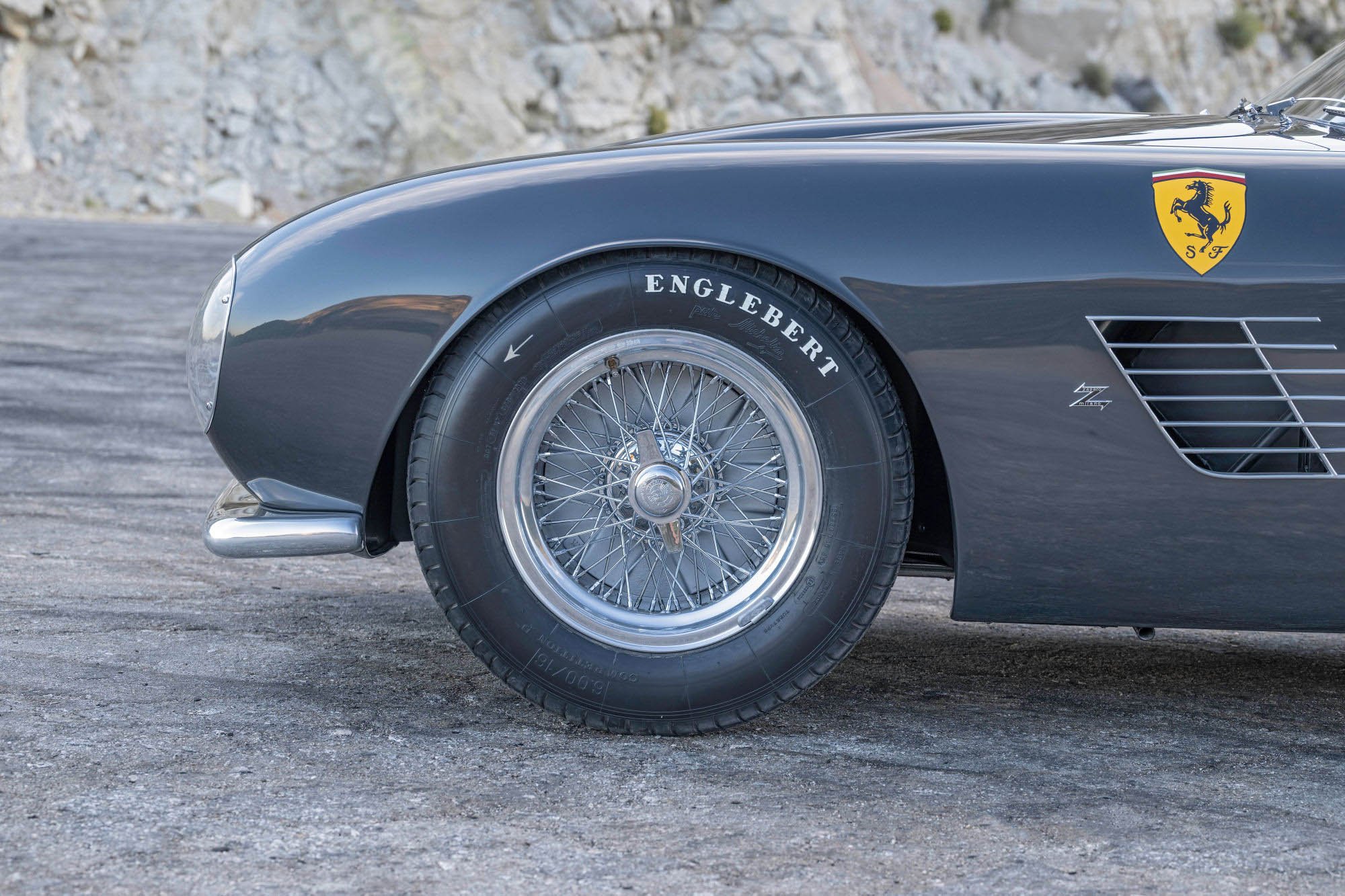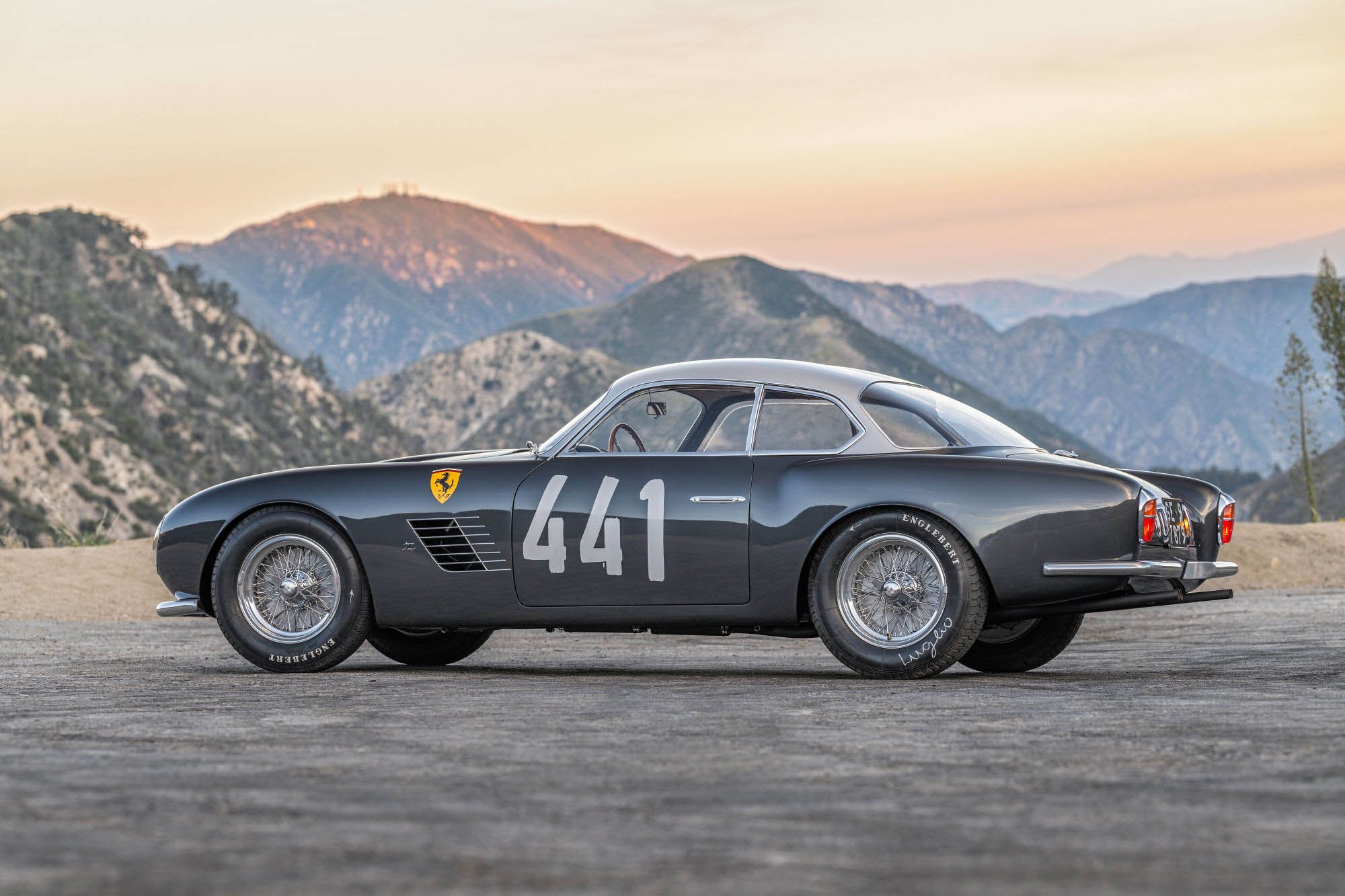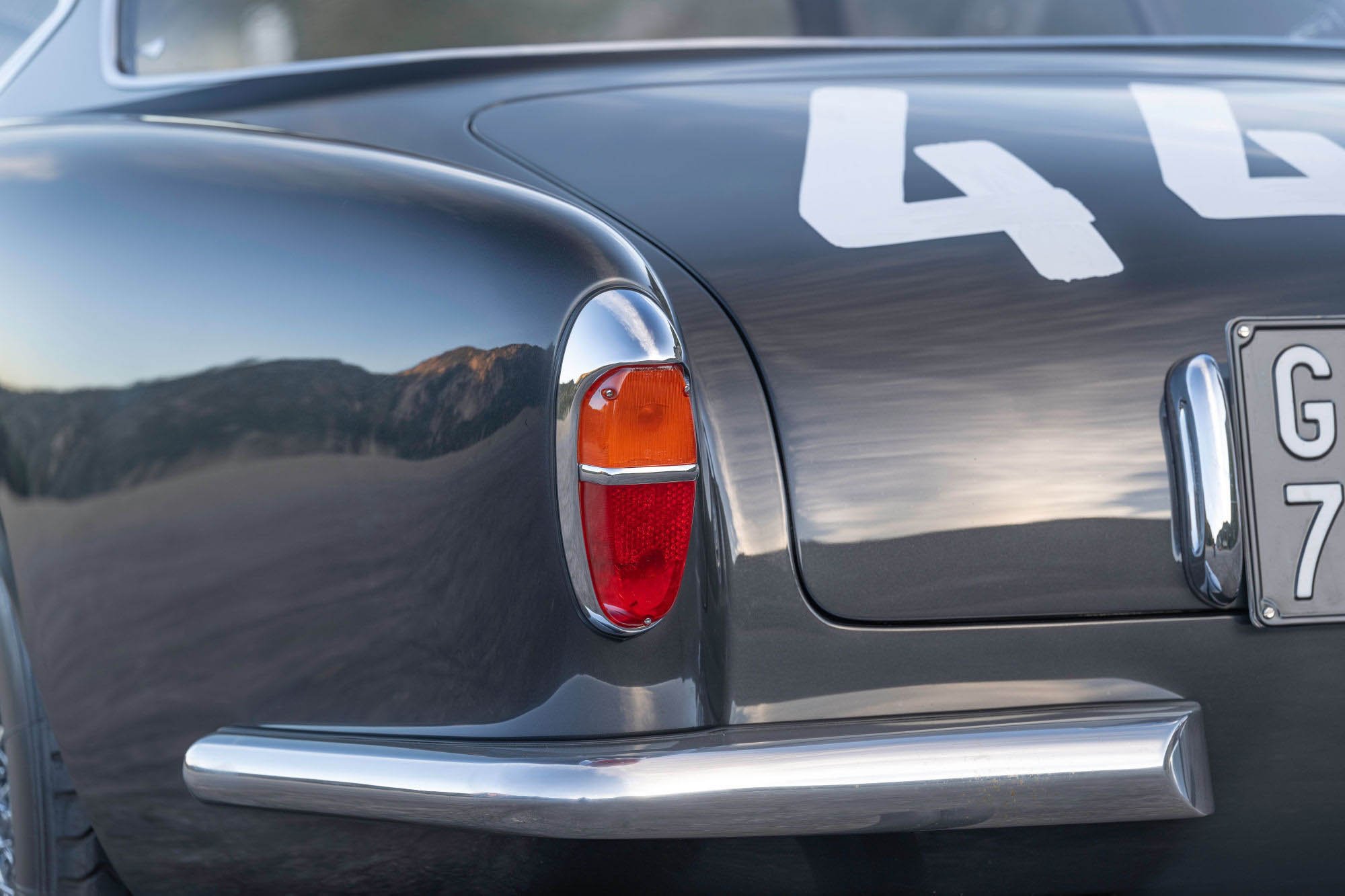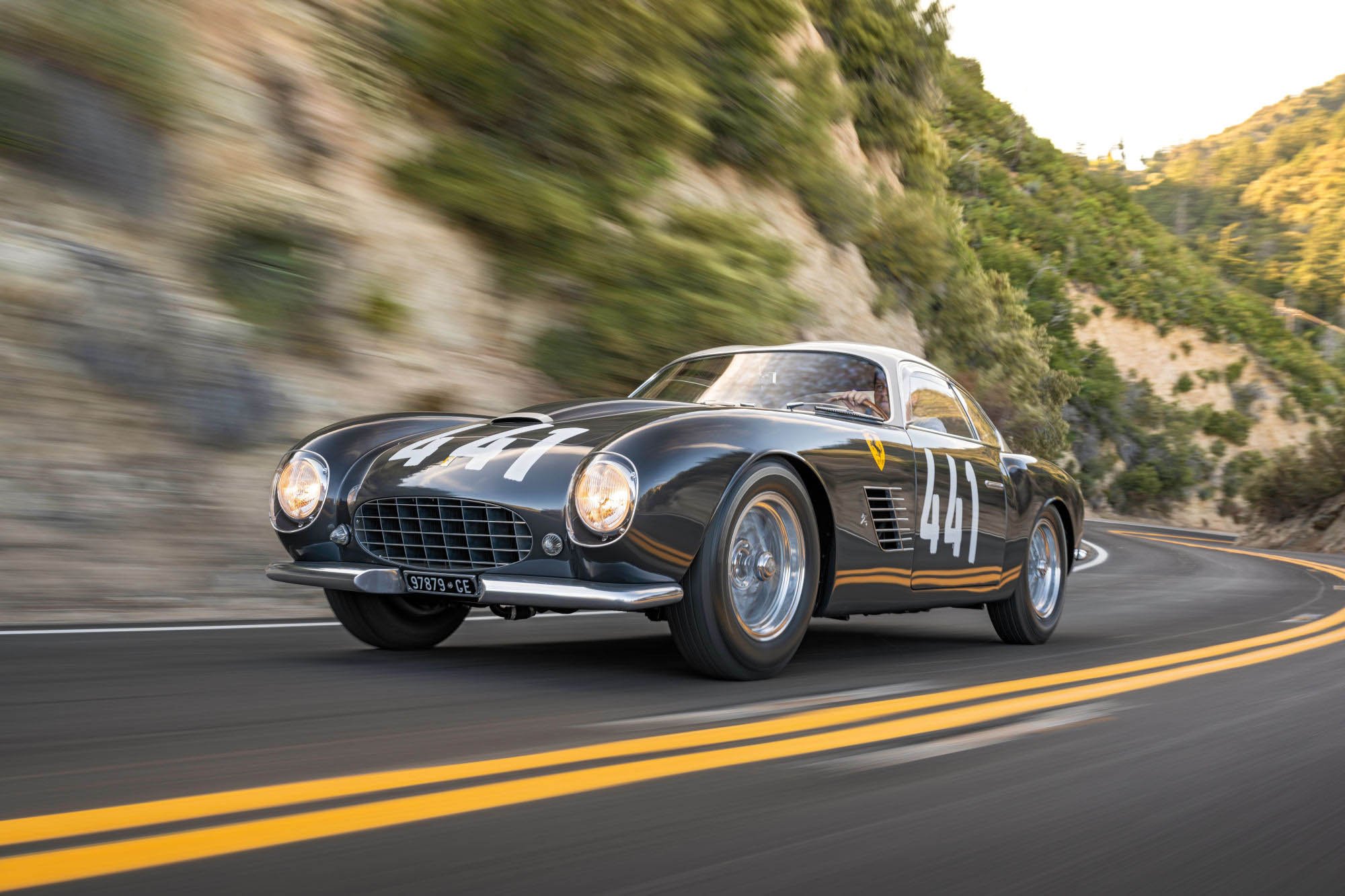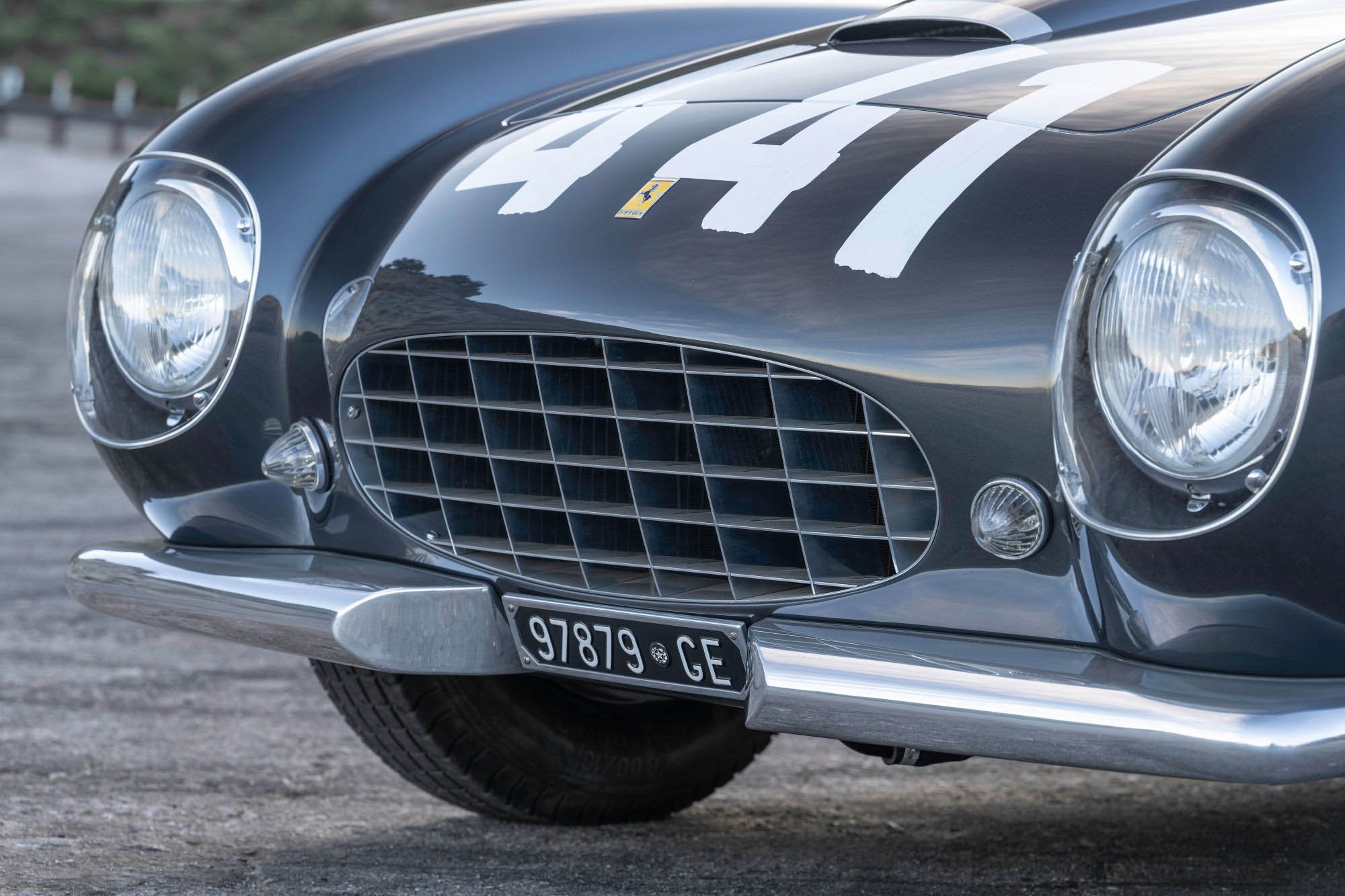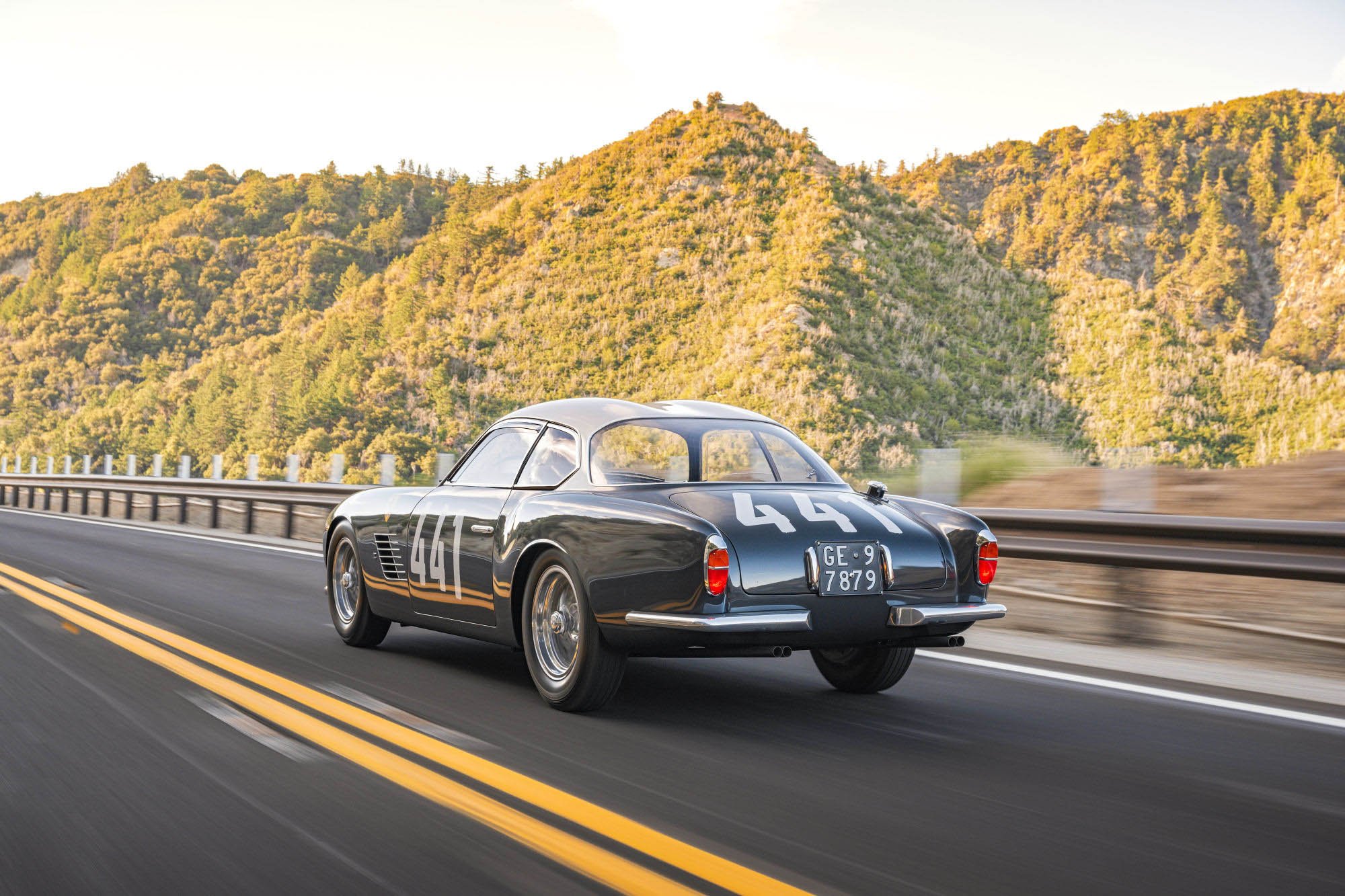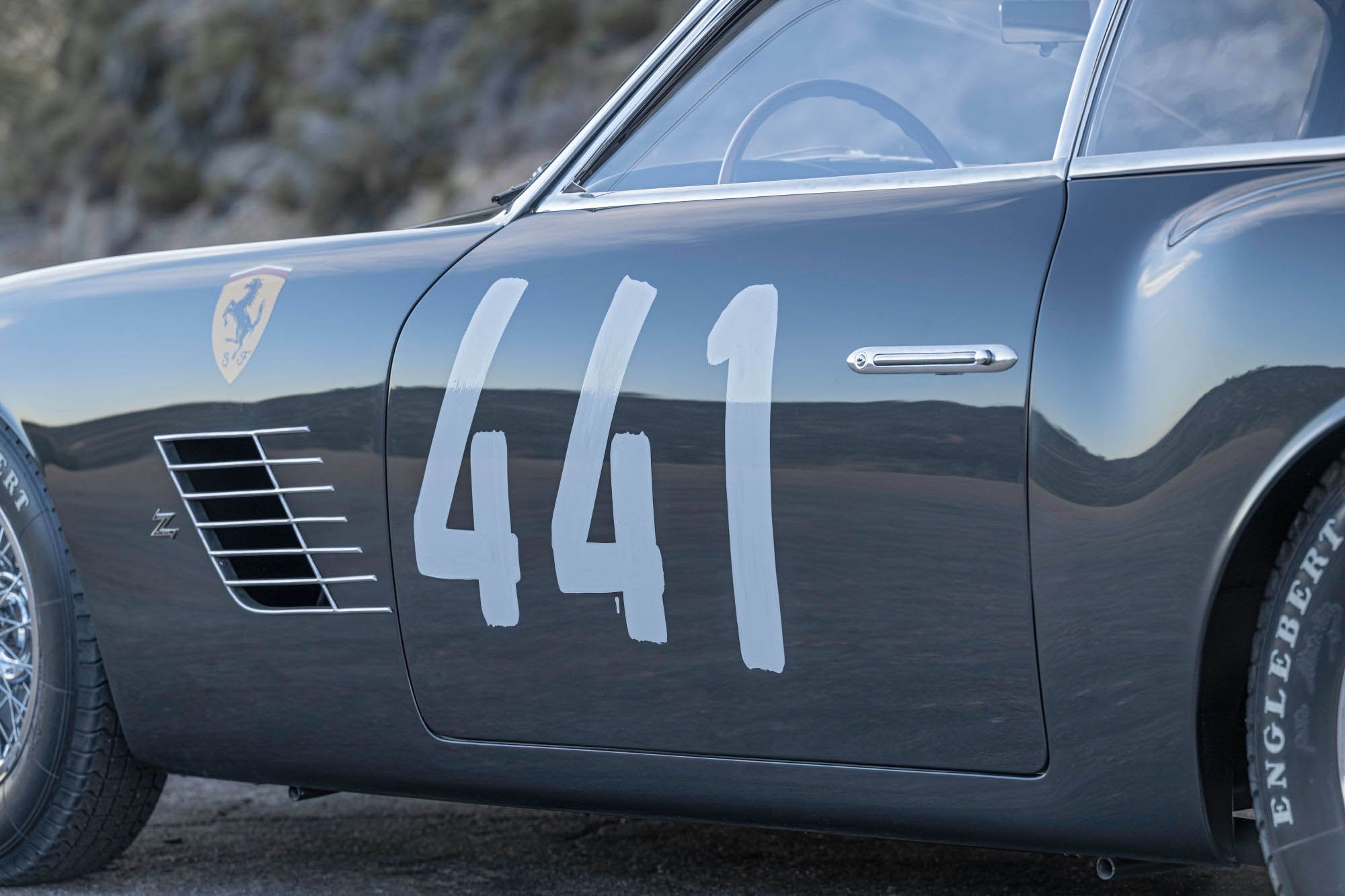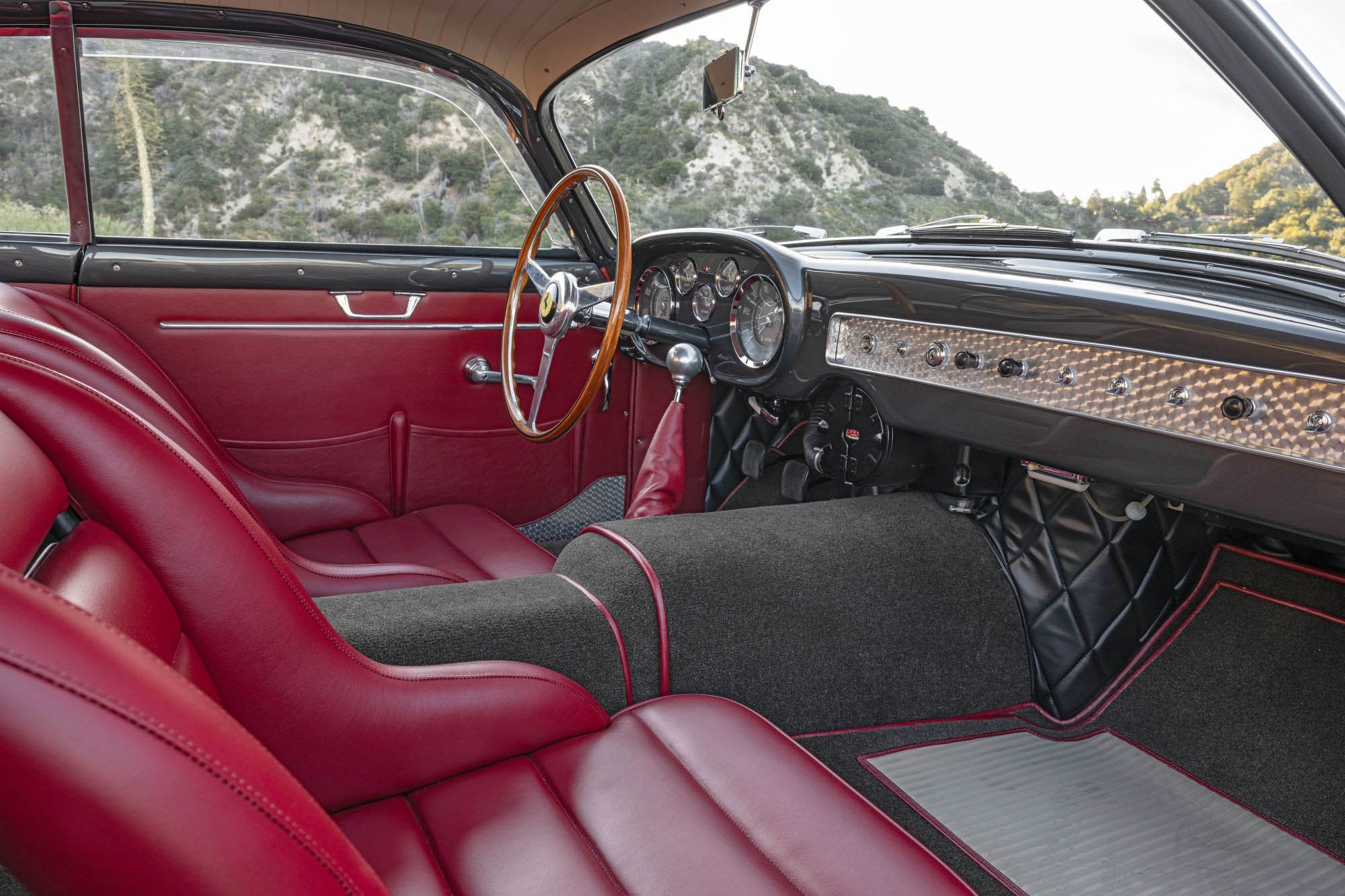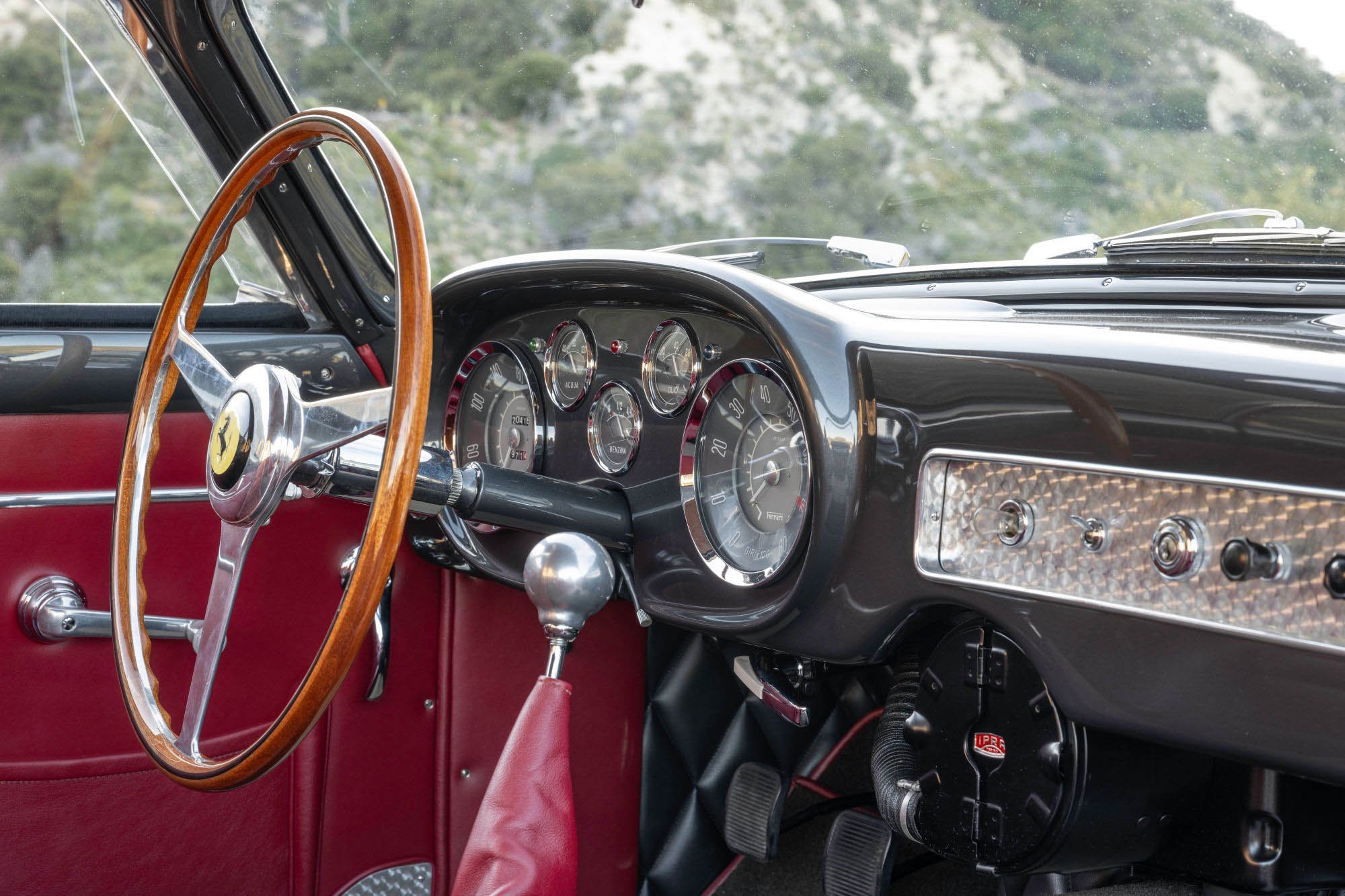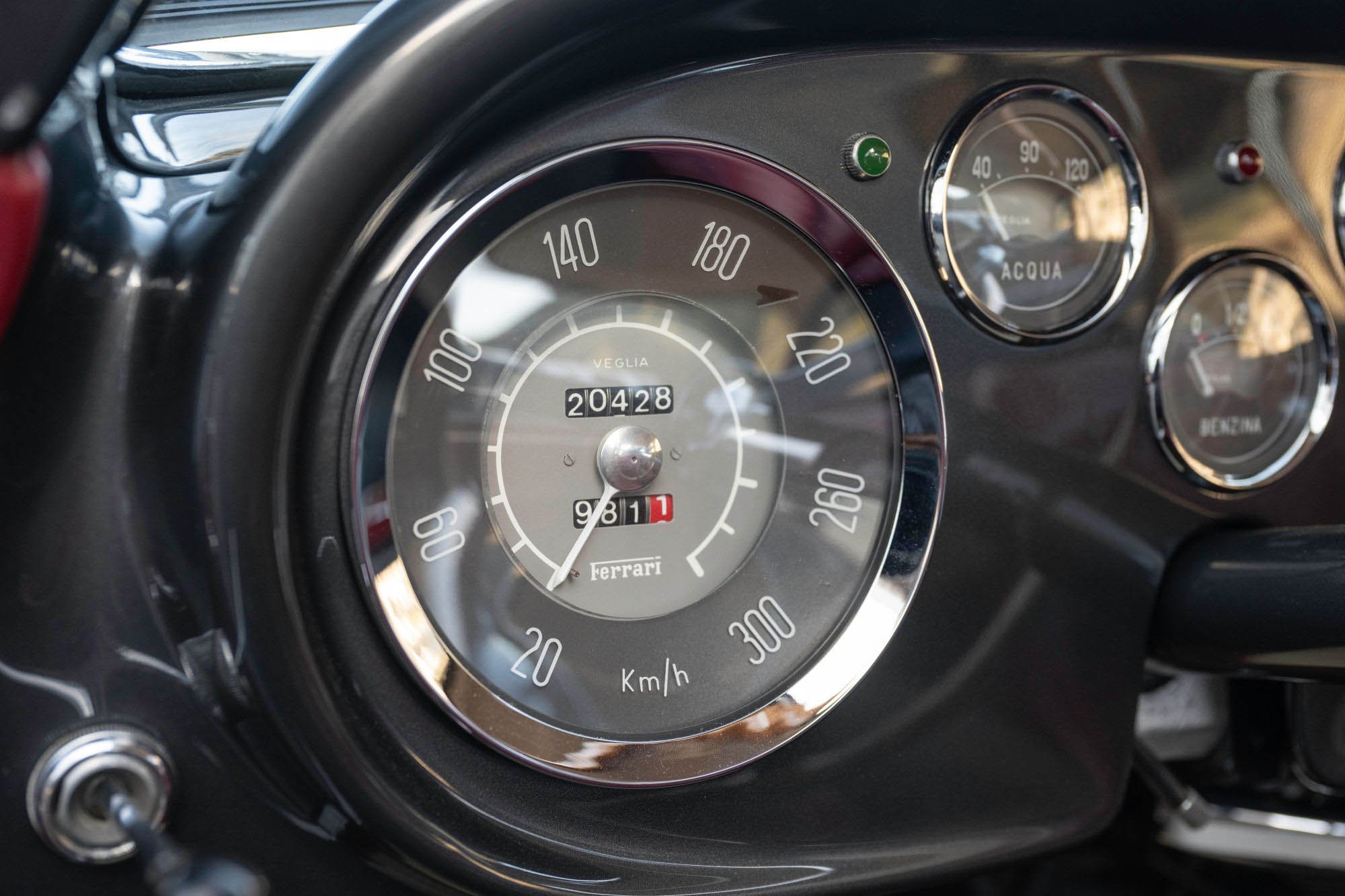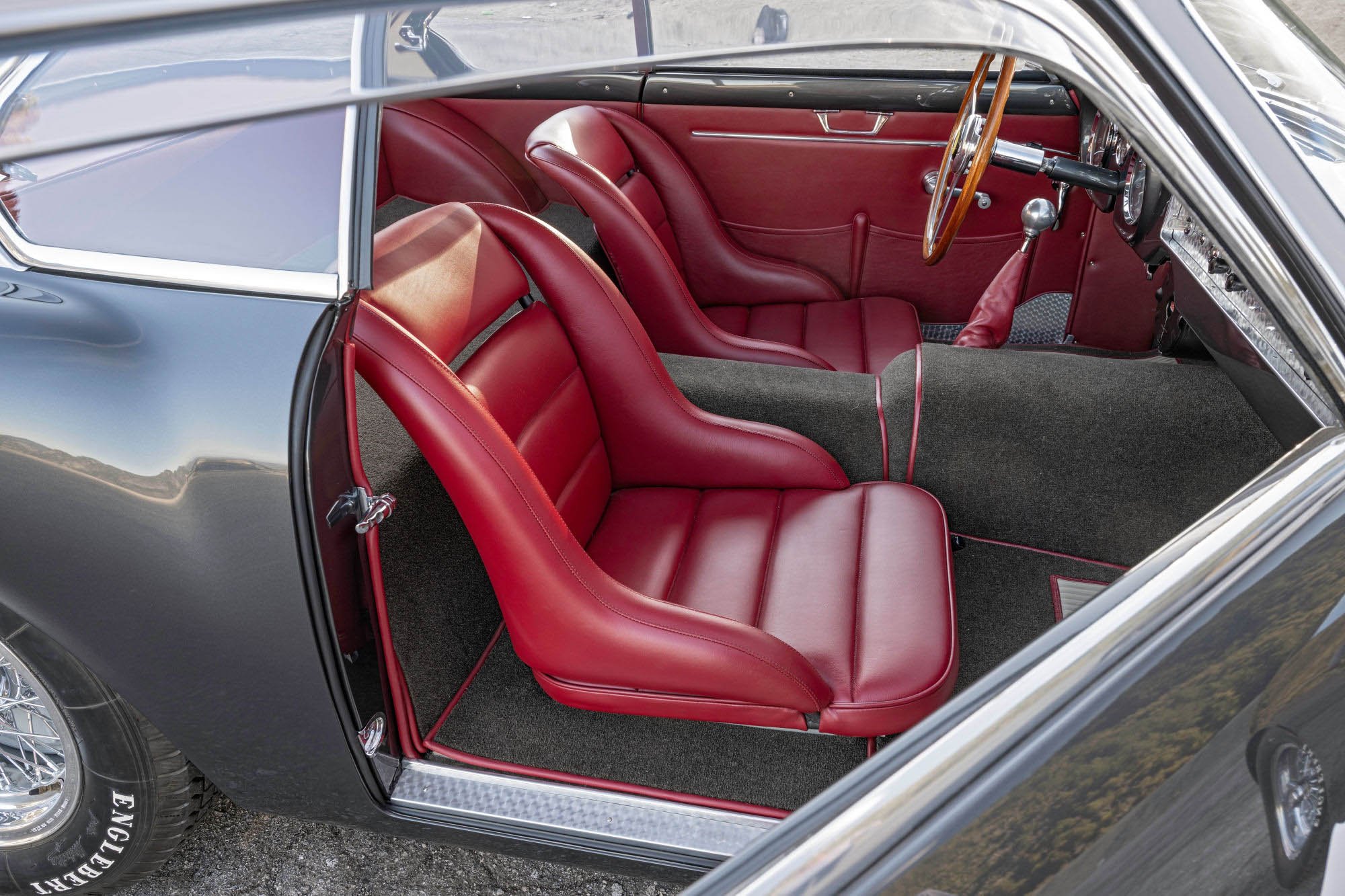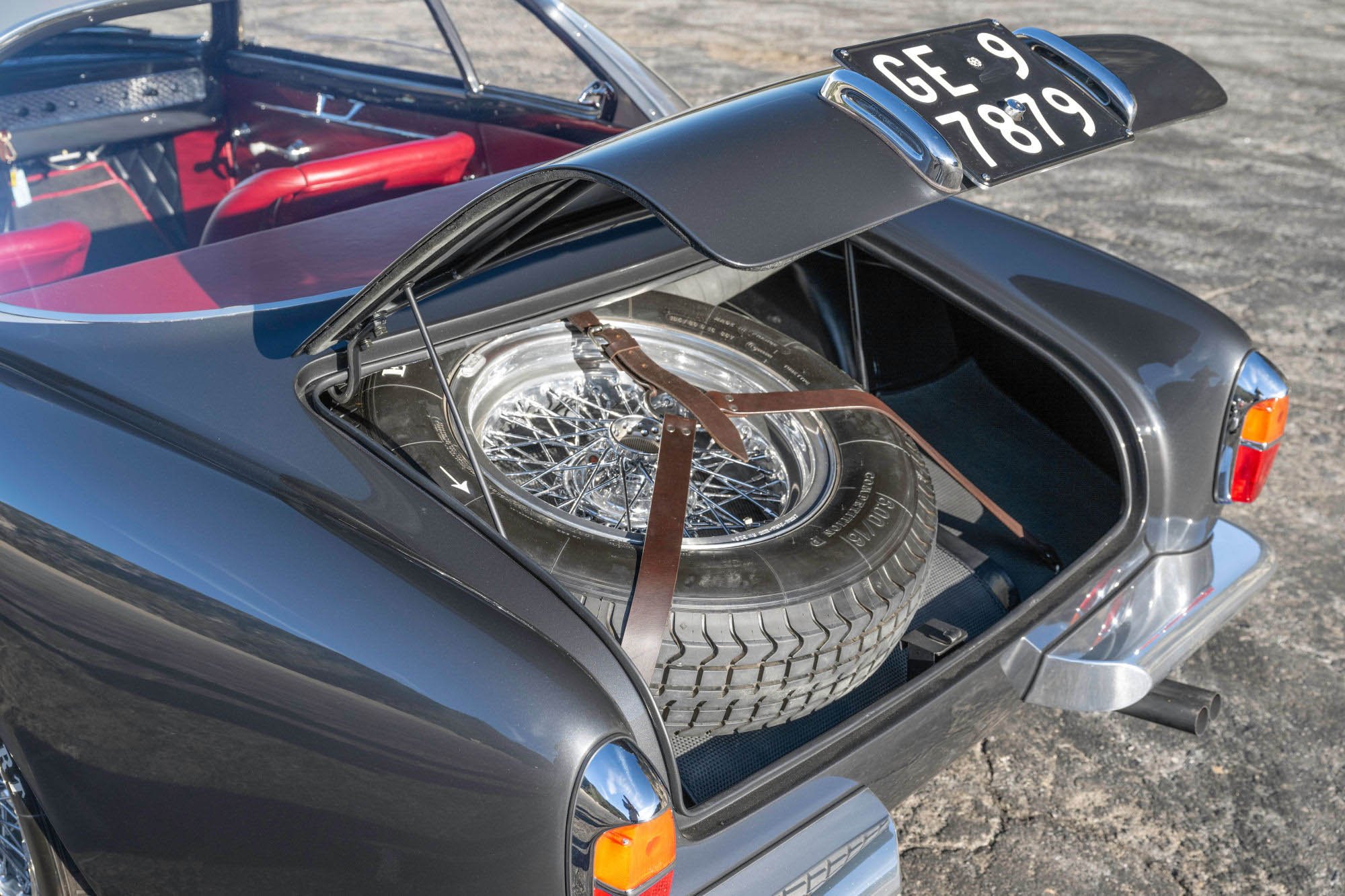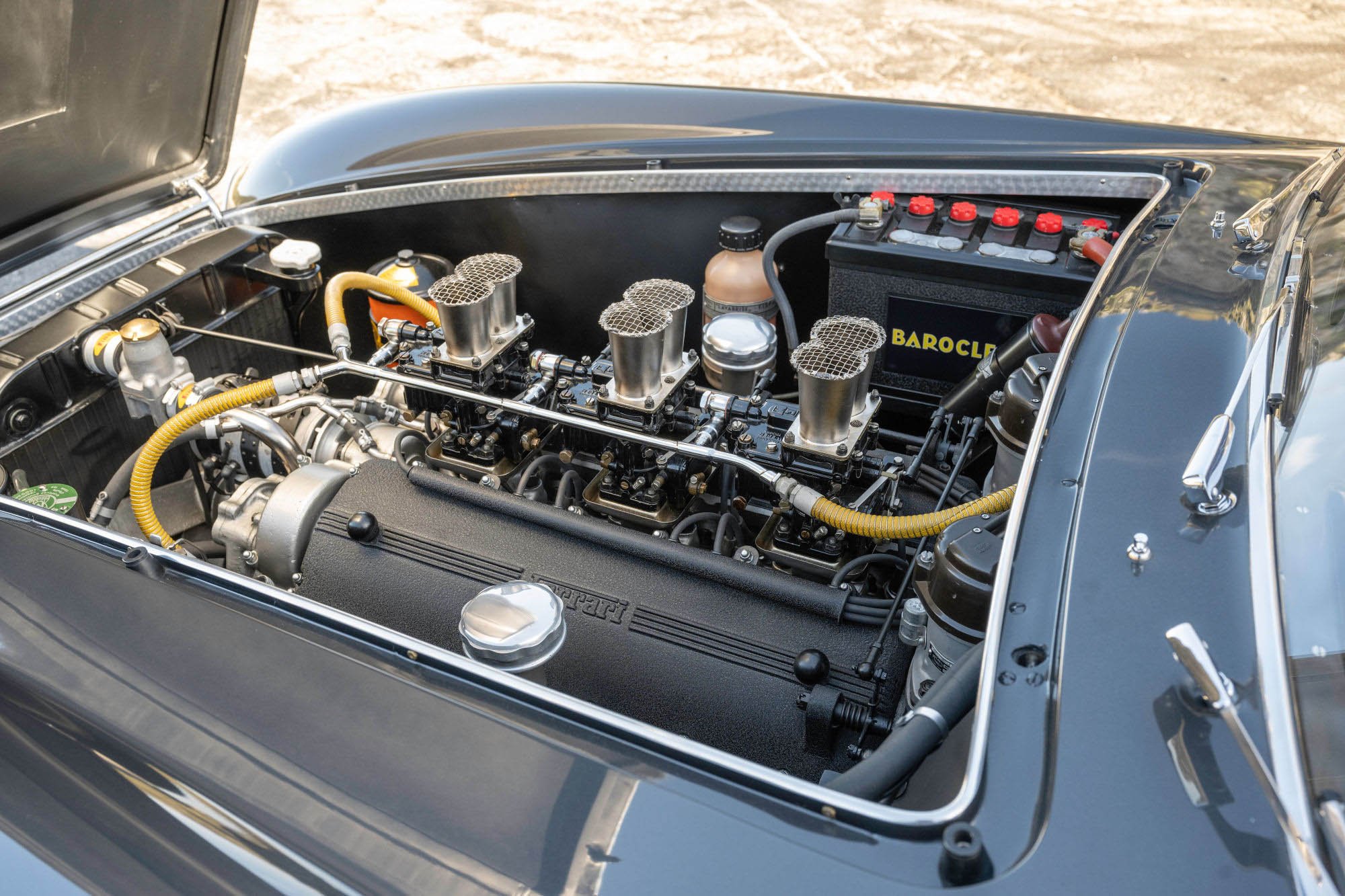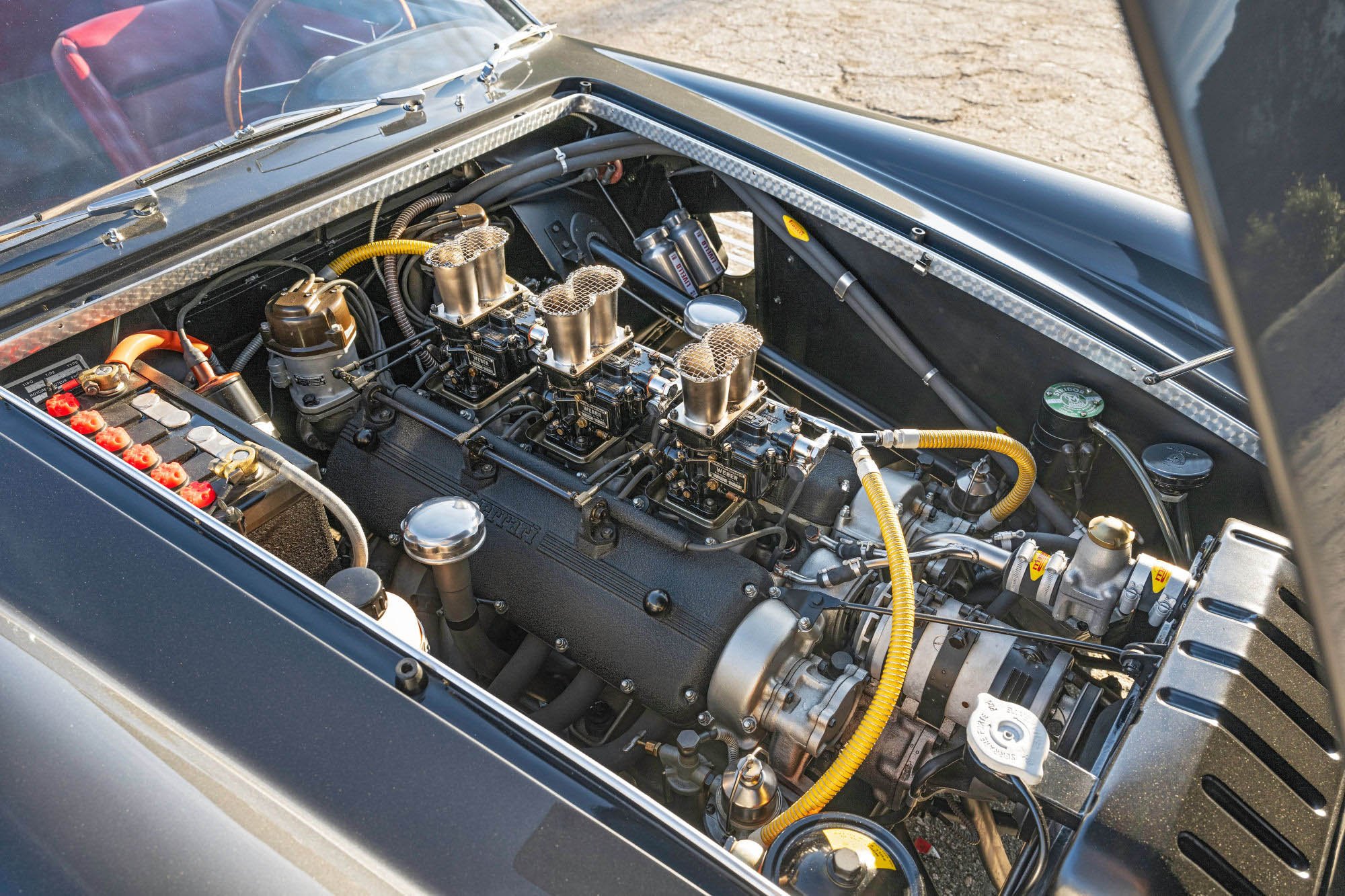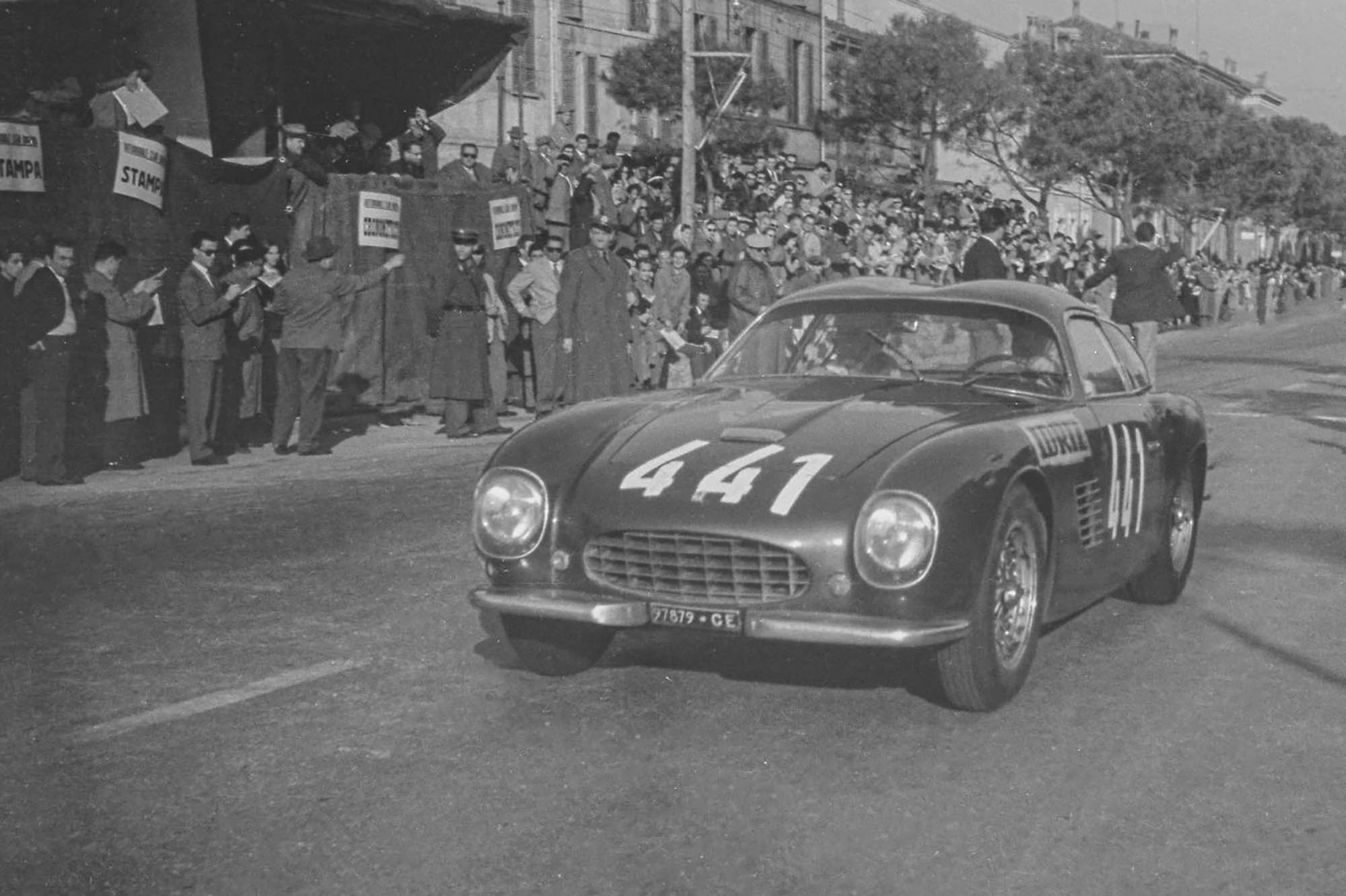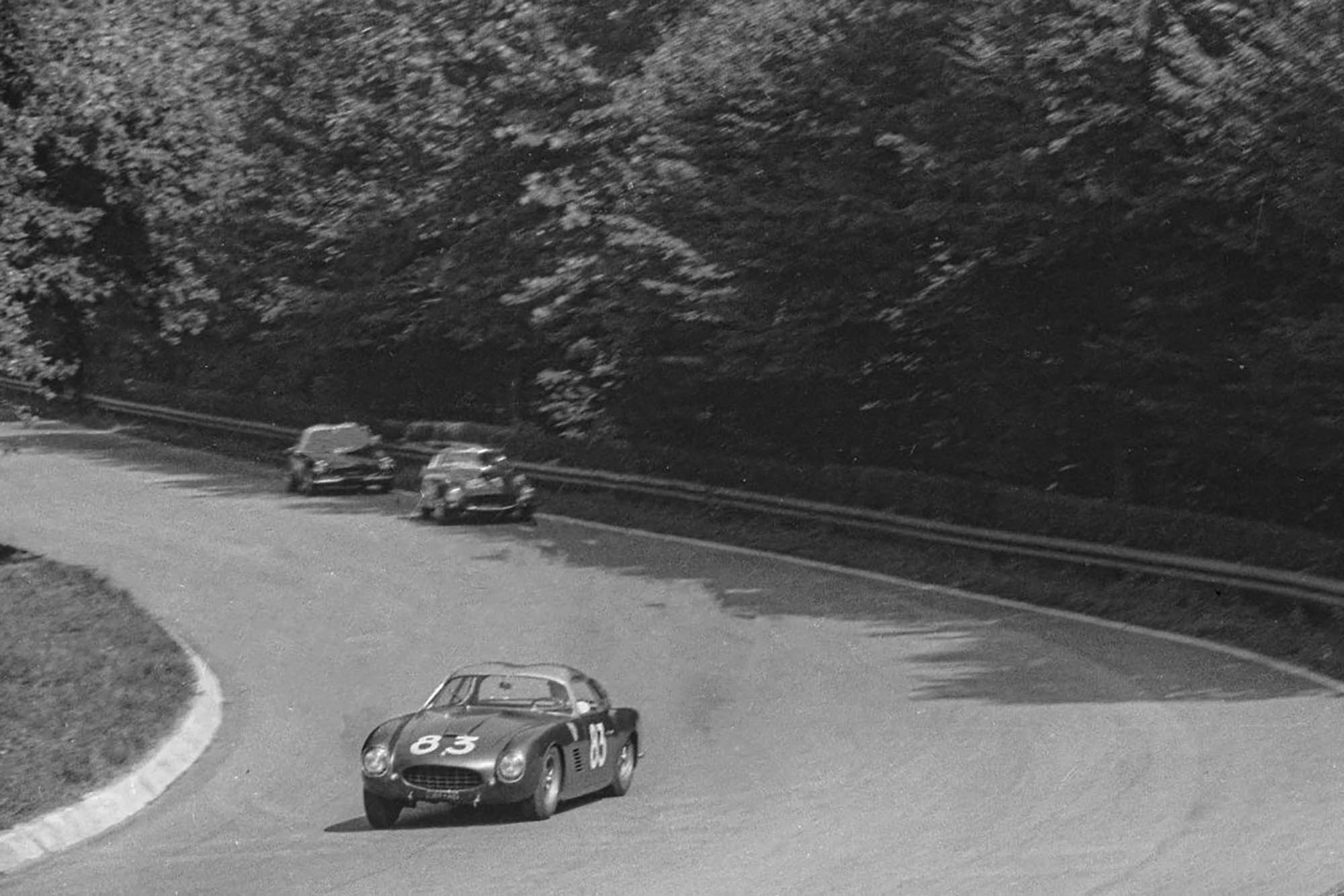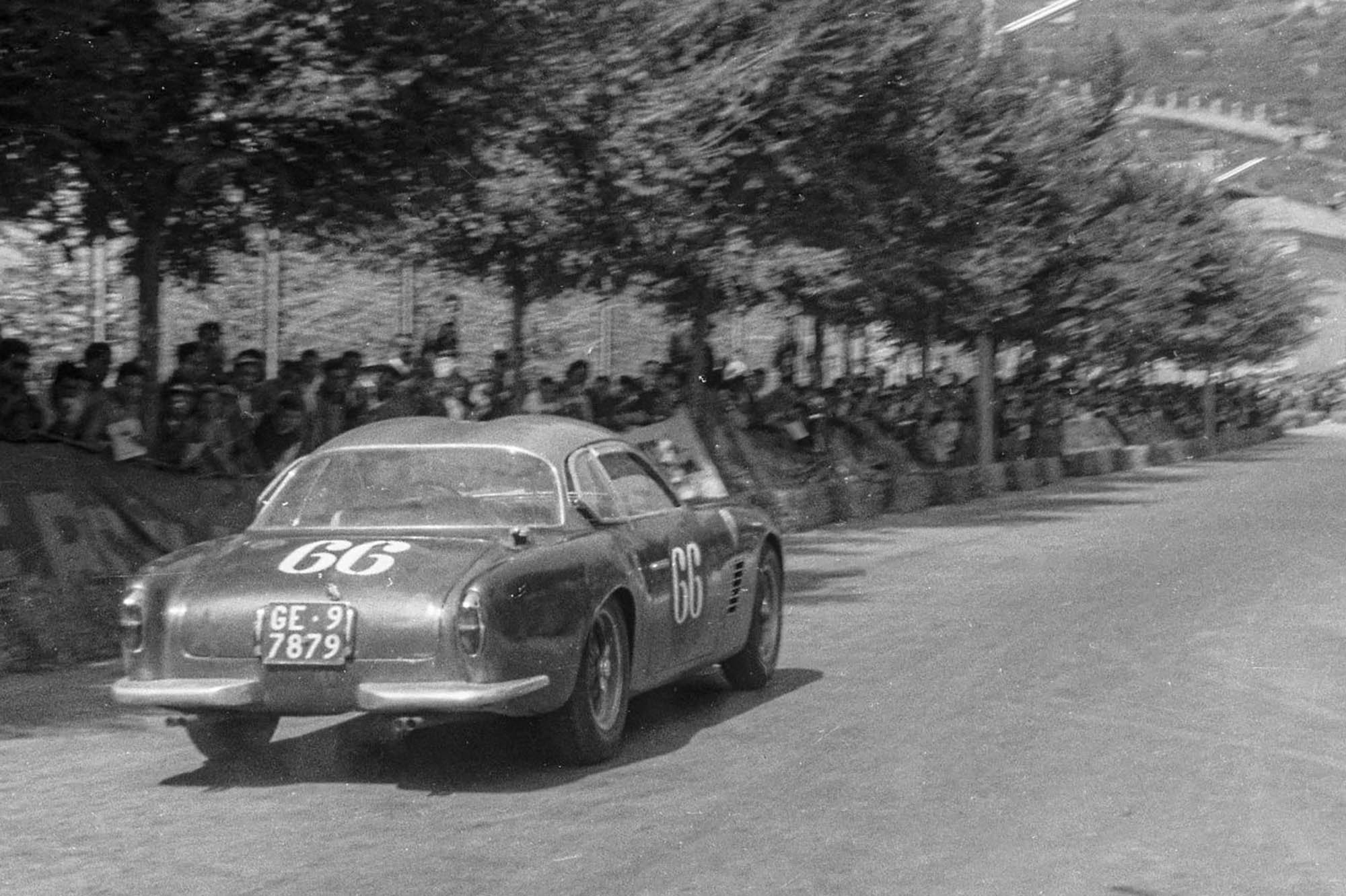Ferrari’s iconic ‘Double-Bubble’ Zagato
This Ferrari 250 GT LWB Berlinetta ‘Tour de France’ with coachwork by Zagato is one of just five bodied by the renowned Milanese coachbuilder. Created to compete at the highest level, this glorious GT racer finished 6th overall and 2nd in class at the 1957 running of the famed Mille Miglia, the final iteration of perhaps the greatest ever road race. Immaculately restored, this remarkable machine has captured silverware at the world’s most exclusive and hotly contested concours events, including just last year at the 2022 Pebble Beach Concours d’Elegance, where it was awarded the Strother MacMinn Most Elegant Sports Car Award.
In 1952, Ferrari launched its 250 platform, a remarkable series of gran turismos that spanned the breadth of road and race, almost entirely unified by their use of Gioacchino Colombo’s genius V12 engine. Among the most celebrated of these models was the 250 GT Berlinetta. Initially a boulevardier bodied by Pinin Farina, the model only found serious competition success following the launch of a more sporting Scaglietti-bodied variant at the 1956 Geneva Motor Show. The car quickly gained the ‘Tour de France’ moniker following Alfonso de Portago’s stunning victory in the 6,000-kilometre, seven-day French epic, which fired the starting pistol for the model’s most successful period in motorsport.
Some 77 examples of the 250 GT ‘Tour de France’ would be built, but none would be more special than a select group of five long-wheelbase cars designed and built by Carrozzeria Zagato. The collaboration resulted in arguably one of the most attractive cars to ever wear the Prancing Horse badge. But it was not just a beautiful machine, Zagato famously believed that coachwork should not only enhance aesthetics but also performance. Indeed, that the car was so breathtaking to behold was almost a happy accident, such was the focus on weight-saving and aerodynamic efficiency.
This example was just the third of the five Zagato-bodied cars to be built, the sixth Ferrari built with Zagato coachwork, and the final example of the initial trio to feature the firm’s iconic double-bubble roofline. It was also a more resolved design than the early cars, benefitting from covered headlamps astride a narrowed grille and a softened rear end, among myriad numerous smaller stylistic changes. While the design was informed and improved by the earlier cars, Zagato no doubt also benefitted from the insight of its first owner, Camillo Luglio, who had also commissioned chassis 0537 GT a year earlier. Said to have been close with Ugo Zagato, the gifted racer paid regular visits to Milan while the car was being bodied.
This special ‘Tour de France’ was ordered on behalf of Camillo Luglio by his wife, Mrs Cornelia Vassalli, and was built at Maranello between January and April 1957. It was registered in April of that year and was entered into the Giro di Sicilia by its new owner that same month, who finished an impressive 5th overall and 2nd in class. That outing proved a useful shakedown run for what would be the car’s greatest challenge: the 1957 Mille Miglia. Luglio partnered with Umberto Carli for the race, which took place less than a month after the car’s Giro success. It lined up on 11 May wearing number 441 and an advertisement for Idriz, a company that specialised in effervescent digestive powders; the pairing is believed to be one of the earliest examples of motorsport sponsorship.
With the early retirement of Stirling Moss and his experimental 4.5-litre Maserati, the race became an all-Ferrari affair, with the Scuderia leading from start to finish and claiming eight out of the top 10 positions. Piero Taruffi proved the victor, closely followed by Wolfgang von Trips, with 3rd position taken by Belgian Olivier Gendebien in a Scaglietti-bodied “14 Louvre” ‘Tour de France’. Equally impressive was the performance of Camillo Luglio and chassis 0665 GT, who brought the spectacular Zagato-bodied Ferrari home a remarkable 6th overall and 2nd in class to Gendebien, an astounding result for a privateer in one of the most technical and grueling tests of endurance in motorsport. Luglio’s success marked the end of an era for the Mille Miglia, with 1957 becoming the event’s final year in its original thousand-mile flat-out road racing glory.
Following its impressive result at the Mille Miglia, the car was entered into a number of races and hillclimbs throughout 1957. On 30 June, Luglio finished 6th overall and 1st in class at the Mont Ventoux Hillclimb, and on 13–14 July, the Italian paired with Francois Picard for the 12 Hours of Reims, finishing an impressive 5th overall. In the same month, Luglio finished 6th overall and 2nd in class at the Aosta-Gran San Bernardo Hillclimb. The car also took class wins at the Bruno & Fofi Vigorelli Trophy and the Coppa Constantini, and in September, Luglio finished 1st in class at the Coppa Inter-Europa at Monza. The year’s competition was concluded with an outright win at the Pontedecimo-Giovi Hillclimb on 29 September.
Luglio entered the 250 GT into the 3 Hours of Pau in March 1958 but never took to the start line; instead, the Ferrari was sold to Vladimiro Galluzzi, former owner of the first Zagato-bodied ‘Tour de France’, prior to being refurbished by Zagato and painted claret red the following month. Galluzzi immediately took it back to the racetrack, racing in late April at the Coppa San Marino and then in May at the Mille Miglia Rally. Galluzzi achieved his first podium result with a 2nd at the Campiano/Vetta d’Enza race meeting in July, followed by a 3rd place at the Coppa Sant Ambroeus at Monza in November 1958.
This iconic 1957 Ferrari 250 GT LWB Berlinetta Tour de France ‘Double-Bubble’ Zagato is currently available via Sotheby’s Sealed auctions held between 16th-19th August 2023 as part of Monterey Car Week. Photos © Sotheby’s / RM Sotheby’s.

